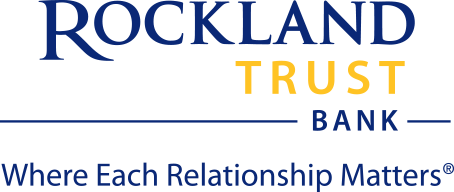Written by Steve Andrews

We’re rapidly approaching the end of the first quarter of 2023 and the New Year’s resolutions we put in place are now all but forgotten. Gone, too, is the rally that began the year. After rising over 8% through February 15, the S&P 500 has given most of that rally back as the pace of disinflation has slowed. A month ago, the January data for Consumer Price Index (CPI), Producer Price Index (PPI), and Personal Consumption Expenditures Price Index (PCE, the Fed’s preferred inflation metric) edged higher from December levels. A hyperactive Fed is what worries investors most, especially since the Fed has not been able to slow the strong jobs market which added another 311,000 jobs in February, following January’s 504,000 surge. With nearly 11 million job openings, job growth has averaged 351,000 over the past three months.
Housing Market Status
The rate hikes to date have put more pressure on a housing market that was already hamstrung by a lack of supply. However, even as mortgage rates are tracking higher again after a lull over the holidays, buyers seem to be getting over the “sticker shock”. Sellers are quite content to stay with their asking prices and are getting active once again as the Spring market awakens.
Has housing bottomed? There are emerging signs that what could be argued as the softest part of the US economy since COVID hit (housing) is showing signs of recovery. This has helped stem the sharp drop in homebuilder confidence which fell from very high levels a year ago (80) to 31 at year-end. Homebuilder confidence rose for a third straight month (to 44) in March, led by the Northeast and Southern US. While still below the 50 mark, builders were cautiously optimistic that the market for new homes will benefit from the current lack of supply in the existing home market. Pending Home Sales, which track contracts signed on existing homes, jumped 8% in January, following a 1.1% rise in December. This suggests that Existing Homes Sales should show an increase in February for the first time in a year. And, despite the headwinds facing the real estate industry, employment in the construction sector remains solid, with 24,000 new construction jobs added in February.
A Look at SVB
Residential real estate wasn’t the only casualty from the Fed’s massive rate hikes. The US just suffered its second-worst banking collapse when Silicon Valley Bank (SVB Financial) succumbed, along with Silvergate Capital, leaving many start-ups in the tech sector in flux. In short, as tech companies and other clients withdrew deposits from SVB to meet their own funding needs during the recent downturn in the tech sector, it forced SVB to sell securities from its portfolio to replenish the cash taken by the withdrawals. Since most of these bonds were purchased during the low-interest rate cycle of a few years ago, selling today while rates are much higher forced SVB to sell the securities at a loss (since bond prices fall when interest rates rise). As SVB sought to shore up its finances by issuing new shares in the bank, investors shied away and then started to pull their own deposits from the bank as well. The run on SVB’s deposits forced the FDIC to step in and take over.
Interest Rates
Still, the Fed remains “hawkish” on its monetary policy. Fed Chair Jerome Powell recently trudged up to Capitol Hill to give his semi-annual report on the economy before Congress. Now a year into its rate-hiking cycle, Powell reemphasized the Fed's commitment to bringing inflation back down to their 2% target – saying that the Fed is willing to trade “some pain” on the economy in exchange for achieving its inflation goals. While he hopes to avoid any pain, in his view, robust economic growth and sustained declines in inflation can't exist in harmony. He did add, however, that the Fed is shifting back to a more data-dependent approach, acknowledging that the full effects of the rate hikes to this point have yet to fully work their way through the economy which, to us, means the Fed will balance further rate hikes with incoming economic data. Following Powell’s testimony, the markets nudged up expectations for the peak Fed Funds rate closer to 5.50% - 5.75% (from a 5.00%-5.25% range) but, given the recent SVB troubles, the Fed may decide to leave rates unchanged at the next FOMC meeting on March 22.
Market Resilience
Despite the angst that the Fed incites on Wall Street, the US consumer, who drives 70% of GDP growth, remains supported by a healthy job market and rising wages that are taking some of the sting out of higher prices. While market activity this quarter (Q1) has been mixed for consumer balance sheets, the Fed recently released its report on Q4 Household Net Worth (HNW) which showed that, after falling $5.8 trillion and $1.3 trillion in Q2 and Q3 last year, respectively, HNW rose $2.9 trillion (2.0%) in Q4. The increase was due to rising stocks, which added $2.7 trillion to the gain, offsetting weakness in real estate values. At $148 trillion, HNW remains about $4.2 trillion lower from its record high in Q1 2022. Still, US consumers remain resilient (albeit pickier) in their spending in the face of higher prices. Retail sales remain strong, with core sales (which strip out volatile categories such as cars and gas stations) on track to have risen 11.2% this quarter from Q4 2022 levels.
The odds of a recession remain close to 50% but, despite the inevitable hiccups to come, we remain optimistic regarding both GDP growth and the path of disinflation. Should a recession emerge, it will surprise few as warnings have been rampant for months now and most businesses have prepared. Rents (housing) account for more than half of the rise in recent inflation data, but they will eventually follow the drop in home price gains in the months ahead. Inflation indicators that don’t include rents (like PPI) have trended down from their 8.1% peak last year to 3.9% in February. And the growth in the US money supply (M2), which had more to do with the spike in prices last year than the supply chain issues which have now healed, all but stopped last year, falling 2.3% over the last 10 months of 2022 and remains near zero. If the trend continues, it (along with a strong US Dollar) will do more to dampen the inflation rate than anything the Fed has planned. This will allow the Fed to ease back on its hawkish approach to monetary policy, thus avoiding a recession and boosting economic growth and GDP.
The troubles that befell SVB and a few other institutions added to recession worries, since many recessions are preceded by a credit crunch caused by the tightening of monetary policy. However, the Fed doesn’t have as tight a control over borrowing and lending as it did before the Great Recession. That’s because, in enacting the quantitative easing (QE) programs to add liquidity to the financial system to deal with that crisis, it added excess banking reserves to the system where practically none existed before 2008. These reserves were expanded following the shutdowns and have helped boost bank loans and leases to record highs as March began, even as interest rates rise to 15-year highs. This borrowing and lending activity suggests that many firms are discounting, or looking beyond, a recession. Meanwhile, swap spreads, which mimic the credit spreads on corporate bonds, remain close to their average spreads for the past few years, showing few signs of systemic risk to the financial system.
In Conclusion
As the second quarter beckons, the markets and the economy remain in a state of flux – the legacy of the shutdowns which turned the global economy on its head. The economic data points, which used to serve as reliable tools to guide us as to the state of economic health, are less useful now because they have been skewed in the aftermath of the 2020 recession. So, we continue to feel our way along, as if in a long, dark hallway, and this frightens some. The good news is that, by and large, the economy continues to move ahead, step by step, as we did in the aftermath of the Great Recession. That last long, slow progression led to the longest economic recovery on record. May we be as fortunate this time.





